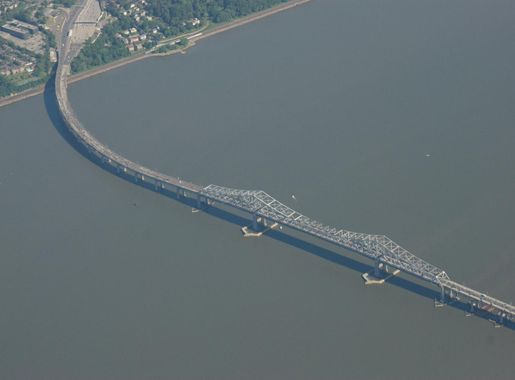
Majuro: The Heart of the Marshall Islands
Discover Majuro, the vibrant capital of the Marshall Islands, where traditional culture meets stunning natural beauty and endless adventure awaits.
Majuro, the capital of the Marshall Islands, is an enchanting destination nestled in the Pacific Ocean. This atoll, comprising 64 islands, is famed for its stunning turquoise lagoons and vibrant marine life. Visitors can explore a mix of traditional Marshallese culture and modern amenities, making it a unique blend of old and new. Immerse yourself in the local culture by visiting the Alele Museum and Public Library, where you can learn about the rich history and traditions of the Marshallese people. The bustling local markets offer a glimpse into daily life, with vendors selling fresh produce, handicrafts, and traditional foods. For those seeking adventure, Majuro offers excellent opportunities for snorkeling and diving. The crystal-clear waters are home to colorful coral reefs and a plethora of marine species. Laura Beach, located on the western tip of the atoll, is a perfect spot for a relaxing day by the sea, with its white sandy shores and gentle waves. Majuro also serves as a gateway to other atolls in the Marshall Islands, each offering its own unique experiences. Whether you're interested in water sports, cultural immersion, or simply unwinding in a tropical paradise, Majuro has something to offer every traveler.
Local tips in Majuro
- Bring reef-safe sunscreen to protect the delicate coral reefs while you enjoy water activities.
- Learn a few basic phrases in Marshallese to connect better with the locals and enrich your experience.
- Pack lightweight, breathable clothing as the climate is warm and humid year-round.
- Try local delicacies such as breadfruit, pandanus, and fresh seafood available at local markets.
- Carry cash, as many small businesses and vendors may not accept credit cards.
Majuro: The Heart of the Marshall Islands
Majuro, the capital of the Marshall Islands, is an enchanting destination nestled in the Pacific Ocean. This atoll, comprising 64 islands, is famed for its stunning turquoise lagoons and vibrant marine life. Visitors can explore a mix of traditional Marshallese culture and modern amenities, making it a unique blend of old and new. Immerse yourself in the local culture by visiting the Alele Museum and Public Library, where you can learn about the rich history and traditions of the Marshallese people. The bustling local markets offer a glimpse into daily life, with vendors selling fresh produce, handicrafts, and traditional foods. For those seeking adventure, Majuro offers excellent opportunities for snorkeling and diving. The crystal-clear waters are home to colorful coral reefs and a plethora of marine species. Laura Beach, located on the western tip of the atoll, is a perfect spot for a relaxing day by the sea, with its white sandy shores and gentle waves. Majuro also serves as a gateway to other atolls in the Marshall Islands, each offering its own unique experiences. Whether you're interested in water sports, cultural immersion, or simply unwinding in a tropical paradise, Majuro has something to offer every traveler.
When is the best time to go to Majuro?
Iconic landmarks you can’t miss
K&K Island Pride Supermarket
Explore the diverse offerings of K&K Island Pride Supermarket in Majuro Atoll, where local flavors meet global selection.
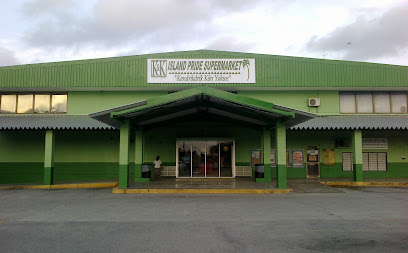
Private Island Boutique Resort Bikendrik Island Hideaway, Marshall Islands
Experience the serene beauty and rich culture of the Marshall Islands at Bikendrik Island Hideaway, a luxurious private island boutique resort.

Alele Museum and Public Library
Explore the vibrant history and culture of the Marshall Islands at the Alele Museum and Public Library, a vital tourist attraction and educational hub.
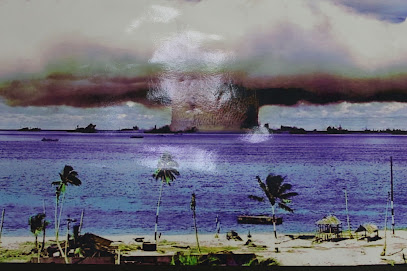
Toeak Bar and Grill
Experience authentic Marshallese cuisine with breathtaking views at Toeak Bar and Grill, the culinary gem of Majuro Atoll.
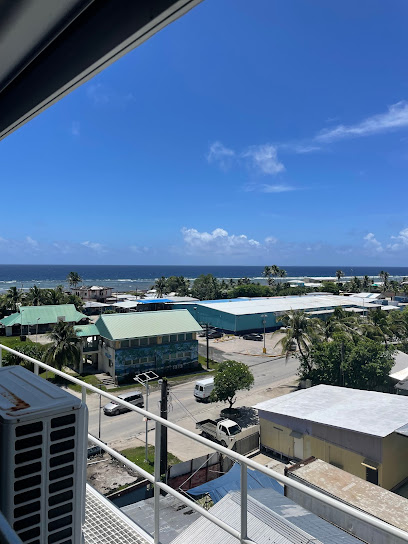
Won Hai Shien 旺海軒
Discover authentic Taiwanese flavors at Won Hai Shien, a delightful culinary gem located in Majuro Atoll, perfect for food lovers and adventurers alike.
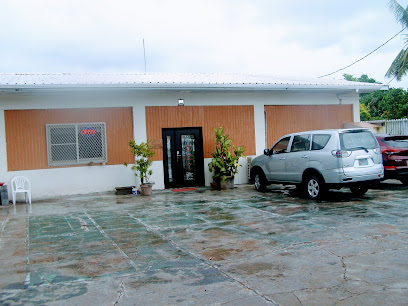
Delap Park
Discover tranquility at Delap Park, a scenic oasis in Majuro Atoll, perfect for relaxation, picnics, and immersing in the beauty of the Marshall Islands.
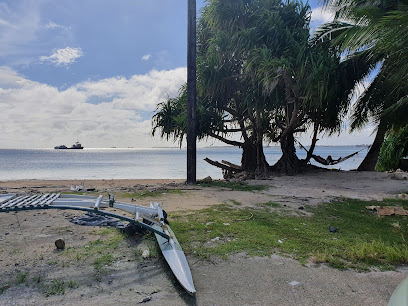
Majuro Peace Park
Discover tranquility at Majuro Peace Park, a serene memorial park honoring the spirit of the Marshall Islands amidst lush gardens.

Kingdom Hall of Jehovah’s Witnesses, Laura Congregation
Immerse yourself in the spiritual and communal life at the Kingdom Hall of Jehovah's Witnesses in Majuro, a unique cultural experience in the Marshall Islands.

Ri-Wut Corner
Discover the essence of local life at Ri-Wut Corner, Majuro's essential gas station and community hub for travelers seeking authentic experiences.
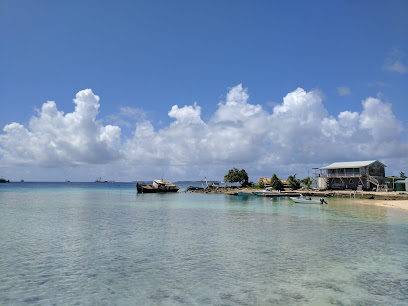
Jittak Take-out
Discover the culinary delights of Majuro at Jittak Take-out, where fresh flavors and local ingredients create an unforgettable dining experience.
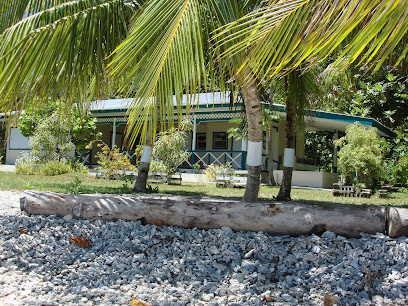
Akia Cafe
Experience the vibrant flavors of the Marshall Islands at Akia Café, a cozy spot in Majuro Atoll for tourists seeking local cuisine and refreshing beverages.

Marshall Islands Visitors Authority
Explore the Marshall Islands with the Visitors Authority, your gateway to a unique tropical adventure filled with culture, beauty, and unforgettable experiences.

Cathedral of the Assumption
Explore the Cathedral of the Assumption in Majuro, a stunning Catholic cathedral and cultural landmark in the Marshall Islands with breathtaking architecture.

Lojkar
Discover tranquility at Lojkar, a charming hotel in Rairok village, Majuro Atoll, offering a unique glimpse into Marshall Islands' culture and natural beauty.

Marshallese ship
Explore the Marshallese shipwreck in Majuro Atoll, a historical landmark that unveils the maritime heritage of the Marshall Islands amidst breathtaking ocean views.

Unmissable attractions to see
Majuro Peace Park
Discover tranquility and history at Majuro Peace Park, a serene memorial park in the heart of the Marshall Islands, perfect for reflection and relaxation.
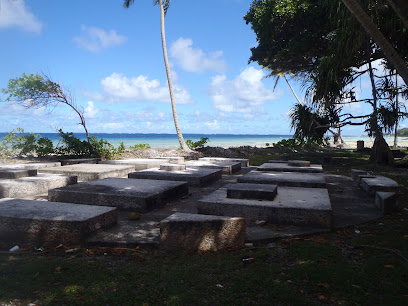
Cathedral of the Assumption
Discover the architectural beauty and spiritual significance of the Cathedral of the Assumption in Majuro Atoll, a serene retreat in the Marshall Islands.
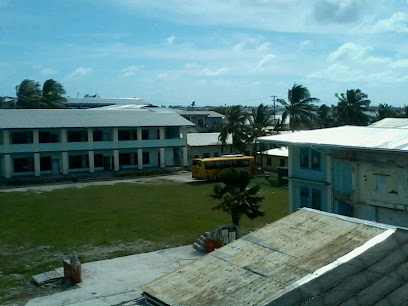
Marshallese ship
Explore the historical Marshallese shipwreck in Majuro Atoll, a captivating landmark that reveals the maritime heritage of the Marshall Islands.

Majuro See-wall Seawall Mural
Explore the Majuro Seawall Mural, a vibrant open-air gallery showcasing the rich culture and marine life of the Marshall Islands in stunning colors.
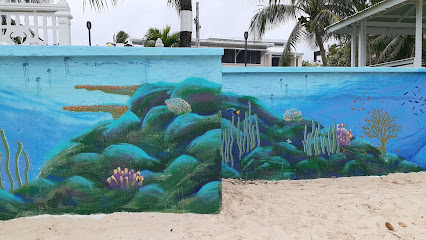
Essential places to dine
Marshall Islands Resort
Experience unparalleled relaxation at Marshall Islands Resort—your tropical haven nestled in Majuro Atoll with stunning views and exciting activities.

K&K Island Pride Supermarket
Explore local flavors at K&K Island Pride Supermarket in Majuro Atoll - your gateway to authentic Marshallese products.
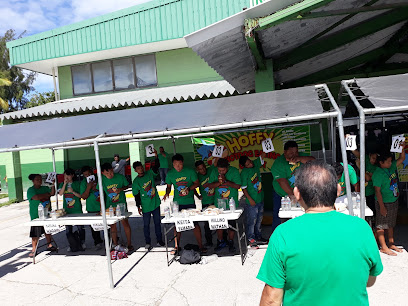
Tide Table Restaurant & Lounge
Experience the vibrant flavors of Majuro at Tide Table Restaurant & Lounge, where local ingredients meet international cuisine in a picturesque setting.
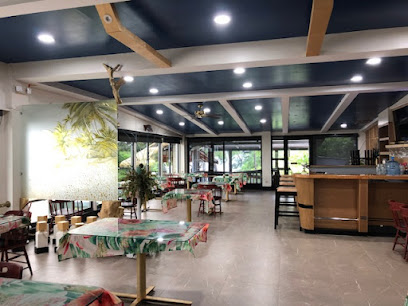
Hotel Robert Reimers
Discover comfort and local charm at Hotel Robert Reimers in Majuro Atoll—your ideal base for exploring the beauty of the Marshall Islands.
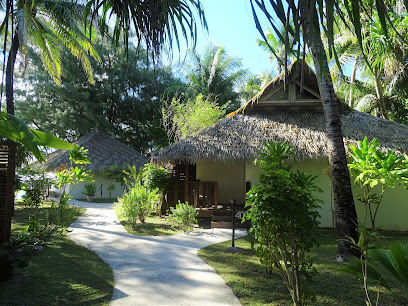
Private Island Boutique Resort Bikendrik Island Hideaway, Marshall Islands
Experience unparalleled luxury and tranquility at Bikendrik Island Hideaway - your ultimate escape in the heart of the Marshall Islands.
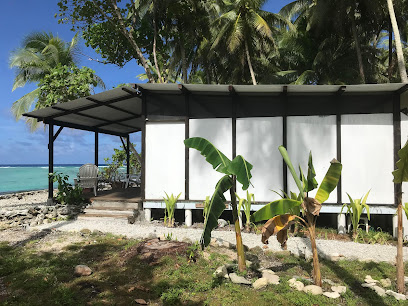
Toeak Bar and Grill
Discover culinary delights at Toeak Bar and Grill in Majuro Atoll – where local flavors meet global cuisine amidst breathtaking views.
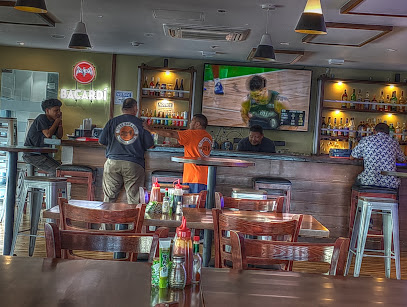
Alliang
Experience authentic Chinese cuisine at Alliang in Majuro Atoll—where flavors meet warmth in every dish.

Won Hai Shien 旺海軒
Discover authentic Taiwanese flavors at Won Hai Shien in Majuro Atoll – where every dish tells a story.
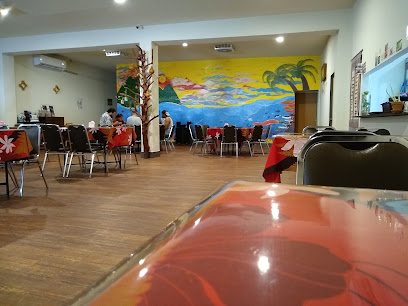
EZ Price Mart
Discover convenience at EZ Price Mart in Majuro Atoll - your go-to supermarket for groceries and essentials during your island getaway.
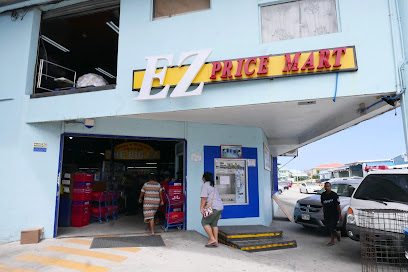
DAR Coffee Corner
Discover local flavors at DAR Coffee Corner in Majuro Atoll - where comfort meets culture in every cup.
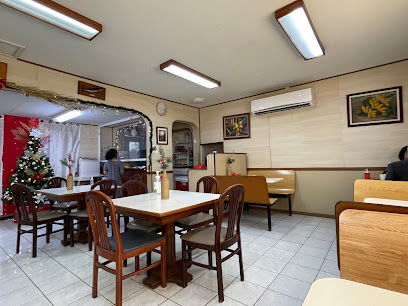
Island Cafe
Discover the heart of Majuro at Island Cafe, where local flavors meet cozy ambiance in an unforgettable dining experience.
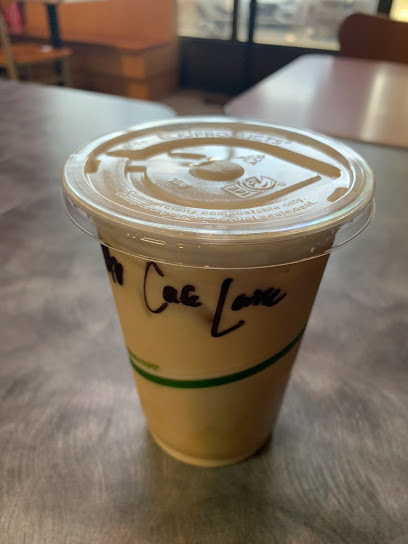
Delap Park
Explore Delap Park: A serene escape filled with lush greenery and vibrant local culture on Majuro Atoll.
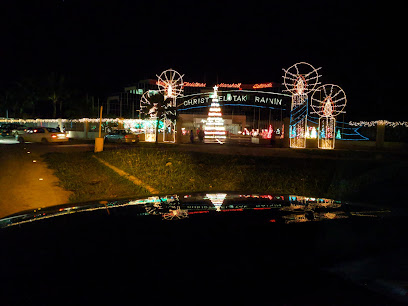
Canvasback Wellness Center
Explore holistic health at Canvasback Wellness Center - your trusted community health hub in Majuro Atoll, Marshall Islands.
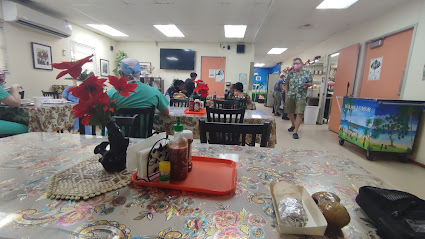
Flame Tree Backpackers Hostel
Discover affordable island living at Flame Tree Backpackers Hostel in Majuro Atoll - your gateway to adventure and cultural experiences.

Jitak En Likatu Bar
Experience the lively atmosphere of Jitak En Likatu Bar in Majuro Atoll – where delicious drinks meet local culture.
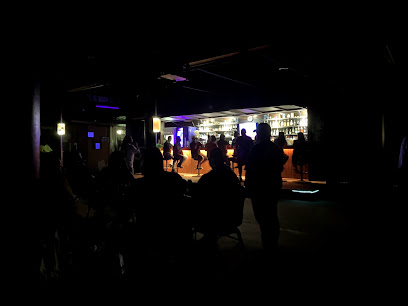
Markets, malls and hidden boutiques
K&K Island Pride Supermarket
Discover K&K Island Pride Supermarket in Majuro: A local haven for fresh produce, unique souvenirs, and an authentic taste of Marshallese culture.
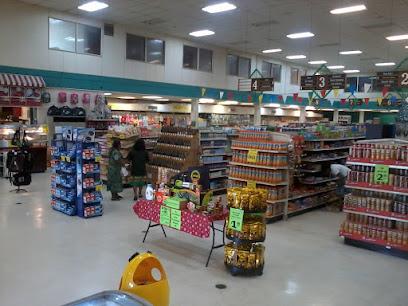
Payless Supermarket
Discover the best of local and international flavors at Payless Supermarket in Majuro Atoll, Marshall Islands.

EZ Price Mart
Discover local flavors and essentials at EZ Price Mart, your go-to supermarket in Majuro Atoll for all your shopping needs.
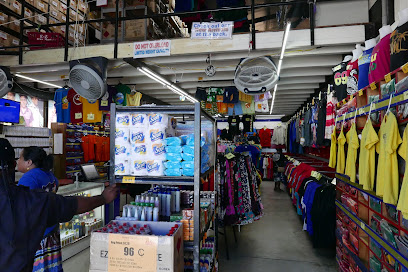
Majuro True Value
Discover Majuro True Value, the essential hardware store in the Marshall Islands, offering a wide range of tools and supplies for every project.
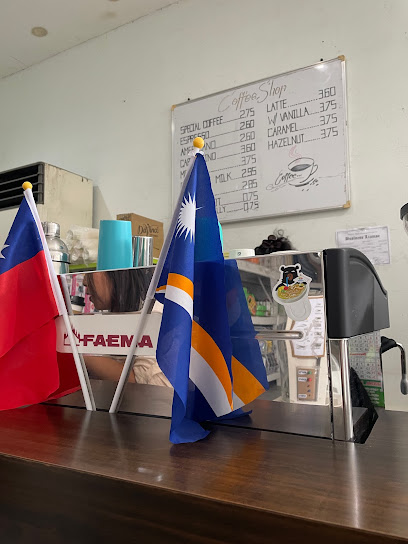
Misco Wholesale
Explore Misco Wholesale in Majuro Atoll for fresh produce, local delicacies, and an authentic night market experience filled with vibrant culture.
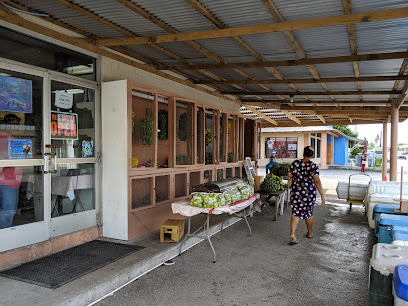
Do It Best
Discover quality hardware and home improvement supplies at Do It Best in Majuro Atoll, your essential stop for DIY projects and repairs.
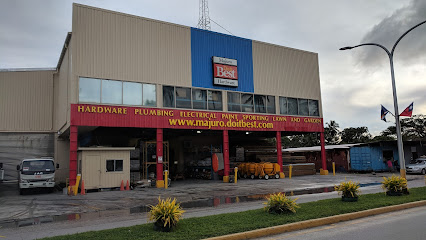
The Beh's Cakeshop
Experience the sweet bliss of The Beh's Cakeshop in Majuro Atoll, where high-quality baked goods and aromatic coffee await you.
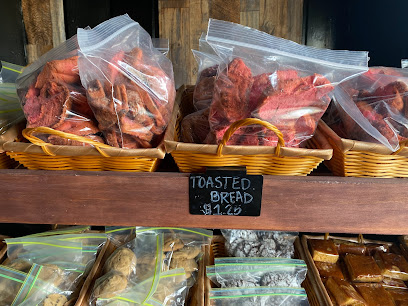
Aihua Store
Explore Aihua Store in Majuro for all your shopping needs, from local delicacies to everyday essentials, all in a friendly atmosphere.
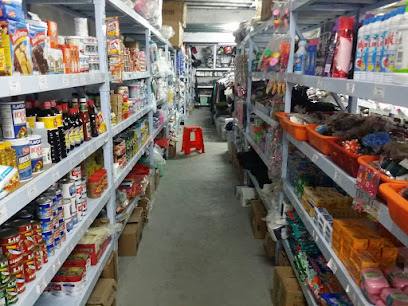
Elefa Handicraft Shop
Explore Elefa Handicraft Shop for authentic Marshall Island souvenirs, showcasing local artistry and cultural heritage in Majuro Atoll.
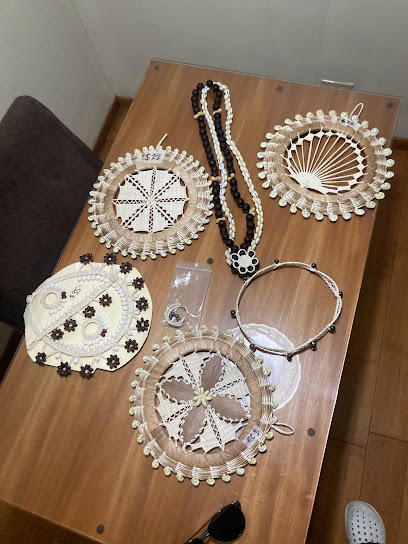
Formosa Supermarket
Explore the culinary diversity of the Marshall Islands at Formosa Supermarket, your essential shopping destination in Majuro Atoll.
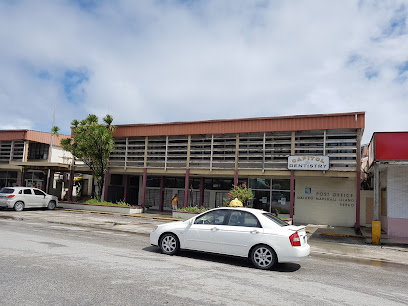
Office Mart
Explore Office Mart in Majuro for a wide range of office supplies and essentials, catering to the needs of tourists and locals alike.

Jitini Lokoben Store
Explore the vibrant Jitini Lokoben Store in Majuro Atoll for unique souvenirs and local goods reflecting the rich culture of the Marshall Islands.

Retty Julian Reimers
Discover the essence of local shopping at Retty Julian Reimers, your essential convenience store in Majuro Atoll, Marshall Islands.
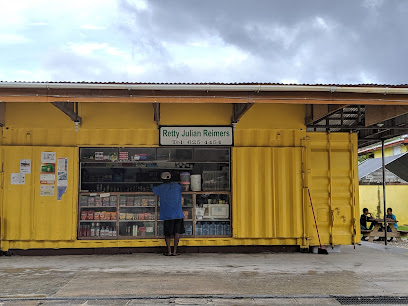
KNK Shopping Center
Explore the vibrant KNK Shopping Center in Majuro Atoll, your go-to destination for local groceries and unique Marshall Islands flavors.

New Hope Store
Discover unique local fashion and souvenirs at New Hope Store in Majuro, Marshall Islands, a must-visit for all tourists exploring the region.
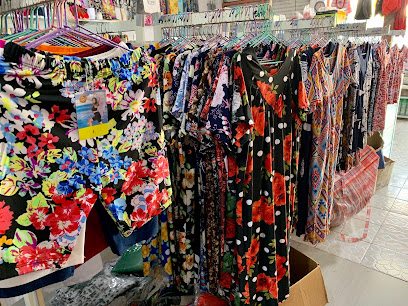
Essential bars & hidden hideouts
Tide Table Restaurant & Lounge
Discover a culinary haven at Tide Table Restaurant & Lounge in Majuro, where local flavors meet international cuisine in a stunning setting.

Toeak Bar and Grill
Experience the vibrant flavors and warm hospitality of Toeak Bar and Grill, the heart of dining in Majuro Atoll, Marshall Islands.

Alliang
Discover the flavors of China at Alliang, a must-visit restaurant in Majuro Atoll, offering delightful dishes in a warm and inviting atmosphere.
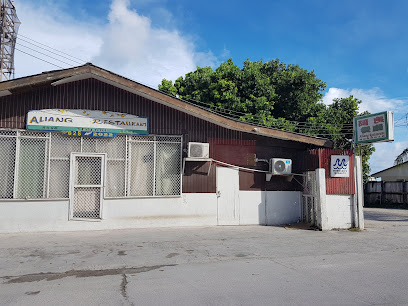
Won Hai Shien 旺海軒
Experience the authentic flavors of Taiwan at Won Hai Shien, a must-visit Taiwanese restaurant in Majuro Atoll, Marshall Islands.
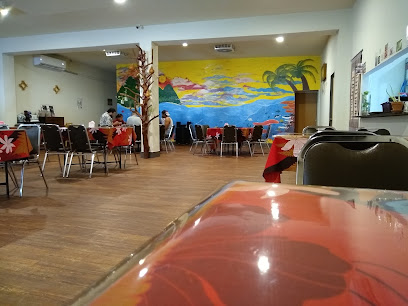
Jitak En Likatu Bar
Discover the vibrant culture and delicious flavors at Jitak En Likatu Bar in Majuro Atoll, a must-visit for every traveler.
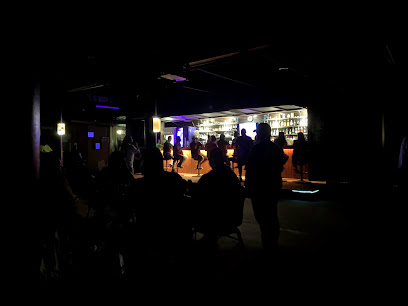
Yummy
Discover the flavors of the Marshall Islands at Yummy, a top-rated takeout restaurant in Majuro Atoll, where every bite is a taste of paradise.
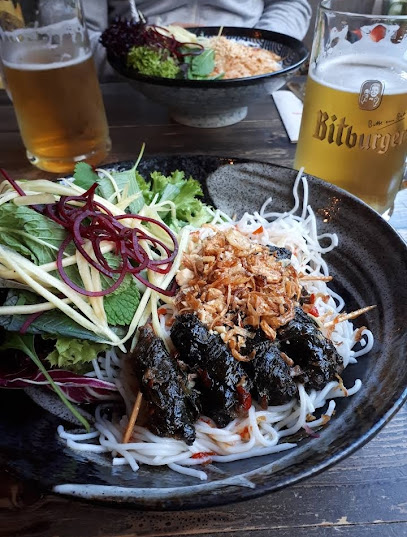
Island Star
Experience the vibrant flavors of the Marshall Islands at Island Star, a culinary treasure in Delap-Uliga-Djarrit.

Seagull restaurant
Discover the culinary delights of Seagull Restaurant in Majuro Atoll, where Asian flavors meet the beauty of the Pacific.
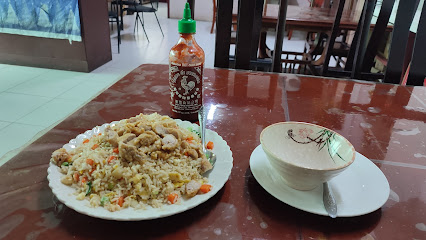
Blue Lagoon Restaurant
Experience the vibrant flavors and stunning views at Blue Lagoon Restaurant in the heart of the Marshall Islands.

BBQ
Discover the unique flavors of BBQ in Majuro Atoll, where local ingredients meet culinary tradition for an unforgettable dining experience.
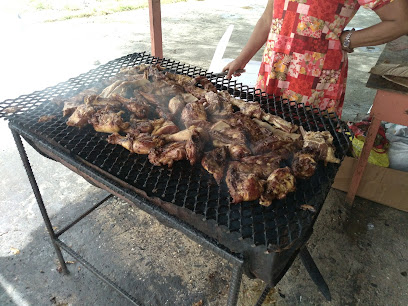
Special Restaurant 蘭姐餐廳
Discover the rich flavors of authentic Chinese cuisine at Special Restaurant 蘭姐餐廳, a must-visit dining destination in Majuro.
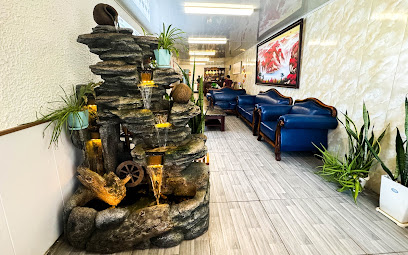
NKB Restaurant
Experience the authentic local cuisine of the Marshall Islands at NKB Restaurant, a culinary gem in Majuro Atoll, where every dish tells a story.
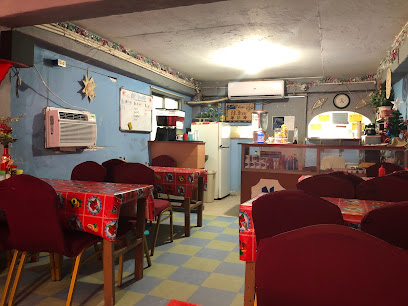
Kitco
Experience the flavors of the Marshall Islands at Kitco, a delightful restaurant in Majuro Atoll offering authentic local cuisine.

Harry's Bar
Discover the vibrant atmosphere of Harry's Bar, a local gem in Majuro Atoll where relaxation meets island charm.

Lucky Star (Mon Reader)
Discover the authentic taste of the Marshall Islands at Lucky Star, Majuro's premier takeout restaurant offering delicious local cuisine.
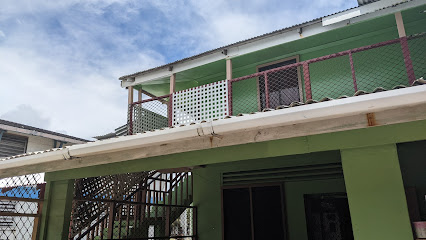
Local Phrases
-
- HelloYokwe
[Yokwe] - GoodbyeIo̧kwe
[Ee-ok-way] - YesEo
[Eh-oh] - NoEbwe
[Eb-way] - Please/You're welcomeJema
[Jay-mah] - Thank youKomol tata
[Koh-mohl tah-tah] - Excuse me/SorryJema
[Jay-mah] - How are you?Ko̧ṃṃool
[Koh-mohl] - Fine. And you?Jen eo. E ko̧ṃṃool in?
[Jen eh-oh. Eh koh-mohl een?] - Do you speak English?E ko̧ṃṃool in ingiis?
[Eh koh-mohl een een-gees?] - I don't understandŅaņinmej
[Nyan-yeen-mayj]
- HelloYokwe
-
- I'd like to see the menu, pleaseE ko̧ṃṃool in kijeekijeen menu, jema
[Eh koh-mohl een kee-jee-kee-jeen menu, jay-mah] - I don't eat meatŅaņinmej in jino
[Nyan-yeen-mayj een jee-now] - Cheers!Kommol
[Koh-mohl] - I would like to pay, pleaseE ko̧ṃṃool in jinoon, jema
[Eh koh-mohl een jin-ohn, jay-mah]
- I'd like to see the menu, pleaseE ko̧ṃṃool in kijeekijeen menu, jema
-
- Help!Eo
[Eh-oh] - Go away!Ņaņinmej in jino
[Nyan-yeen-mayj een jee-now] - Call the Police!Ko̧ņaaņ
[Kohn-nyan] - Call a doctor!E ko̧ṃṃool in jinoon, jema
[Eh koh-mohl een jin-ohn, jay-mah] - I'm lostŅaņinmej in jino
[Nyan-yeen-mayj een jee-now] - I'm illŅaņinmej in jino
[Nyan-yeen-mayj een jee-now]
- Help!Eo
-
- I'd like to buy...E ko̧ṃṃool in jino
[Eh koh-mohl een jee-now] - I'm just lookingŅaņinmej in jino
[Nyan-yeen-mayj een jee-now] - How much is it?Ko̧ņaaņ
[Kohn-nyan] - That's too expensiveŅaņinmej in jino
[Nyan-yeen-mayj een jee-now] - Can you lower the price?E ko̧ṃṃool in jinoon, jema
[Eh koh-mohl een jin-ohn, jay-mah]
- I'd like to buy...E ko̧ṃṃool in jino
-
- What time is it?Ko̧ņaaņ
[Kohn-nyan] - It's one o'clockKabo
[Kah-boh] - Half past (10)Ko̧ket leen
[Koh-ket leen] - MorningJen in jikin
[Jen een jee-keen] - AfternoonJen in bar
[Jen een bar] - EveningJen in jeṃaaņ
[Jen een jem-nyan] - YesterdayJab in jerbal
[Jab een jer-bal] - TodayJab in jikin
[Jab een jee-keen] - TomorrowJab in jinoon
[Jab een jin-ohn] - 1Jikiroro
[Jee-kee-roh-roh] - 2Jikiru
[Jee-kee-roo] - 3Jikiņae
[Jee-keen-nyan] - 4Jikiea
[Jee-kee-eh-ah] - 5Jikiṃaaņ
[Jee-keem-nyan] - 6Jikiep
[Jee-kee-ep] - 7Jikijoul
[Jee-kee-johl] - 8Jikio̧
[Jee-kee-oh] - 9Jikio̧a
[Jee-kee-oh-ah] - 10Jikiņae
[Jee-keen-nyan]
- What time is it?Ko̧ņaaņ
-
- Where's a/the...?Ko̧ņaaņ
[Kohn-nyan] - What's the address?Ko̧ņaaņ
[Kohn-nyan] - Can you show me (on the map)?E ko̧ṃṃool in jinoon, jema
[Eh koh-mohl een jin-ohn, jay-mah] - When's the next (bus)?Ko̧ņaaņ
[Kohn-nyan] - A ticket (to ....)E ko̧ṃṃool in jinoon, jema
[Eh koh-mohl een jin-ohn, jay-mah]
- Where's a/the...?Ko̧ņaaņ
History of Majuro
-
Majuro, the capital of the Marshall Islands, boasts a rich history that dates back over two millennia. Its earliest inhabitants, the Micronesians, settled on the atoll around 2,000 years ago. These seafaring people developed a complex society based on navigation, fishing, and the cultivation of breadfruit, taro, and pandanus.
-
The first recorded European contact with Majuro occurred in 1529 when Spanish explorer Álvaro de Saavedra Cerón sighted the atoll. It wasn't until the 19th century, however, that European influence began to take root. In 1824, the British whaler Captain Charles Marshall visited the islands, giving the archipelago its name.
-
In 1885, the German Empire established a protectorate over the Marshall Islands, including Majuro. During this time, the Germans introduced new agricultural practices and infrastructure improvements. They also began the exploitation of phosphate resources, which significantly impacted the local economy and environment.
-
Following World War I, the League of Nations mandated the Marshall Islands to Japan. Japanese administration brought further development to Majuro, including the construction of schools, roads, and airstrips. However, the local population also faced harsh control and exploitation under Japanese rule.
-
During World War II, Majuro became a strategic target for Allied forces. In January 1944, American forces captured the atoll, establishing a naval base that played a crucial role in the Pacific campaign. After the war, Majuro became part of the Trust Territory of the Pacific Islands, administered by the United States.
-
In 1979, the Marshall Islands gained self-government, and Majuro was designated as the capital. Full independence was achieved in 1986 under the Compact of Free Association with the United States. Today, Majuro is a bustling hub of cultural and economic activity, blending traditional Marshallese customs with modern influences.
-
Majuro's culture is deeply rooted in its history and the ocean that surrounds it. Traditional Marshallese navigation, using stick charts and star paths, remains a revered skill. Local crafts such as weaving and carving are still practiced, and the atoll hosts numerous festivals celebrating Marshallese heritage, including canoe races and dance performances.
Majuro Essentials
-
Majuro is the capital city of the Marshall Islands and is located on the Majuro Atoll in the central Pacific Ocean. The main point of entry is Amata Kabua International Airport (MAJ), which receives flights from major hubs such as Honolulu (HNL) and Guam (GUM). United Airlines is the primary carrier serving Majuro. Travelers can also reach Majuro via sea, although this option is less common and mostly used by cargo ships and private yachts.
-
Transportation within Majuro is relatively straightforward. Taxis are the most common mode of transport and are readily available throughout the island. There are also shuttle buses that operate along the main road, connecting various parts of the atoll. Rental cars are available but limited, and given the compact nature of Majuro, they may not be necessary for most visitors. Bicycles can also be rented for a more eco-friendly and leisurely way to explore the island.
-
The official currency in Majuro is the United States Dollar (USD). Credit cards are accepted in major hotels, restaurants, and some shops, but it is advisable to carry cash for smaller establishments and markets. ATMs are available, but they can be limited, so it is wise to withdraw sufficient cash upon arrival or before traveling to more remote areas of the atoll.
-
Majuro is generally a safe destination for tourists. However, it is advisable to take standard precautions such as avoiding unlit areas at night and keeping an eye on personal belongings in crowded places. There are no specific high-crime areas targeting tourists, but petty theft can occur, so it is always best to stay vigilant and aware of your surroundings.
-
In case of emergency, you can dial 911 for immediate assistance. The local police station and medical facilities are available in Majuro. It is recommended to have travel insurance that covers medical emergencies. For minor health issues, there are pharmacies where you can purchase over-the-counter medications. The Majuro Hospital is the main healthcare facility on the atoll.
-
Fashion: Do dress modestly, especially in more traditional areas. Avoid wearing revealing clothing. Religion: Do respect local customs and traditions. Always ask for permission before taking photos of people or religious sites. Public Transport: Do be respectful and considerate of other passengers. Don't eat or drink on public transport. Greetings: Do greet people with a friendly 'Yokwe,' which means hello. A handshake is also acceptable. Eating & Drinking: Do try local delicacies such as fresh seafood and coconut-based dishes. Don't refuse food or drink offerings, as it is considered impolite.
-
To experience Majuro like a local, visit the local markets where you can buy fresh produce and traditional Marshallese crafts. Engage with locals, as they are often friendly and willing to share stories about the island's history and culture. Don't miss visiting the Alele Museum and Public Library to learn more about the Marshall Islands' rich heritage. For a unique experience, take a boat trip to some of the nearby uninhabited islets for snorkeling and exploring pristine beaches.
Trending Landmark in Majuro
-
K&K Island Pride Supermarket
-
Private Island Boutique Resort Bikendrik Island Hideaway, Marshall Islands
-
Alele Museum and Public Library
-
Toeak Bar and Grill
-
Won Hai Shien 旺海軒
-
Delap Park
-
Majuro Peace Park
-
Kingdom Hall of Jehovah’s Witnesses, Laura Congregation
-
Ri-Wut Corner
-
Jittak Take-out
-
Akia Cafe
-
Marshall Islands Visitors Authority
-
Cathedral of the Assumption
-
Lojkar
-
Marshallese ship
Nearby Cities to Majuro
-
Things To Do in Aur
-
Things To Do in Mili
-
Things To Do in Kosrae
-
Things To Do in Anabar
-
Things To Do in Ijuw
-
Things To Do in Uaboe
-
Things To Do in Anibare
-
Things To Do in Denigomodu
-
Things To Do in Buada
-
Things To Do in Aiwo
-
Things To Do in Boe
-
Things To Do in Yaren
-
Things To Do in Nan Madol
-
Things To Do in Pohnpei
-
Things To Do in Kolonia



